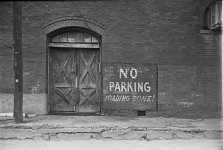SciAggie
Well-known
It seems that many of us who shoot film scan our negatives and process our images in a digital work flow. Most of my images require some form of adjustment for contrast and levels, maybe even brightness.
I was wondering how many people use the layers blending modes as well as the layer adjustments for levels and contrast. I found a nice tutorial related to layers (it even uses B&W in the examples) that has expanded my options for my images. http://www.photoshopessentials.com/photo-editing/layer-blend-modes/
I guess I am curious as to what workflow others have, particularly their use of layers and blending.
I'll throw in a couple of images for discussion:
unaltered scan:

after editing using layer blending:

I was wondering how many people use the layers blending modes as well as the layer adjustments for levels and contrast. I found a nice tutorial related to layers (it even uses B&W in the examples) that has expanded my options for my images. http://www.photoshopessentials.com/photo-editing/layer-blend-modes/
I guess I am curious as to what workflow others have, particularly their use of layers and blending.
I'll throw in a couple of images for discussion:
unaltered scan:

after editing using layer blending:



